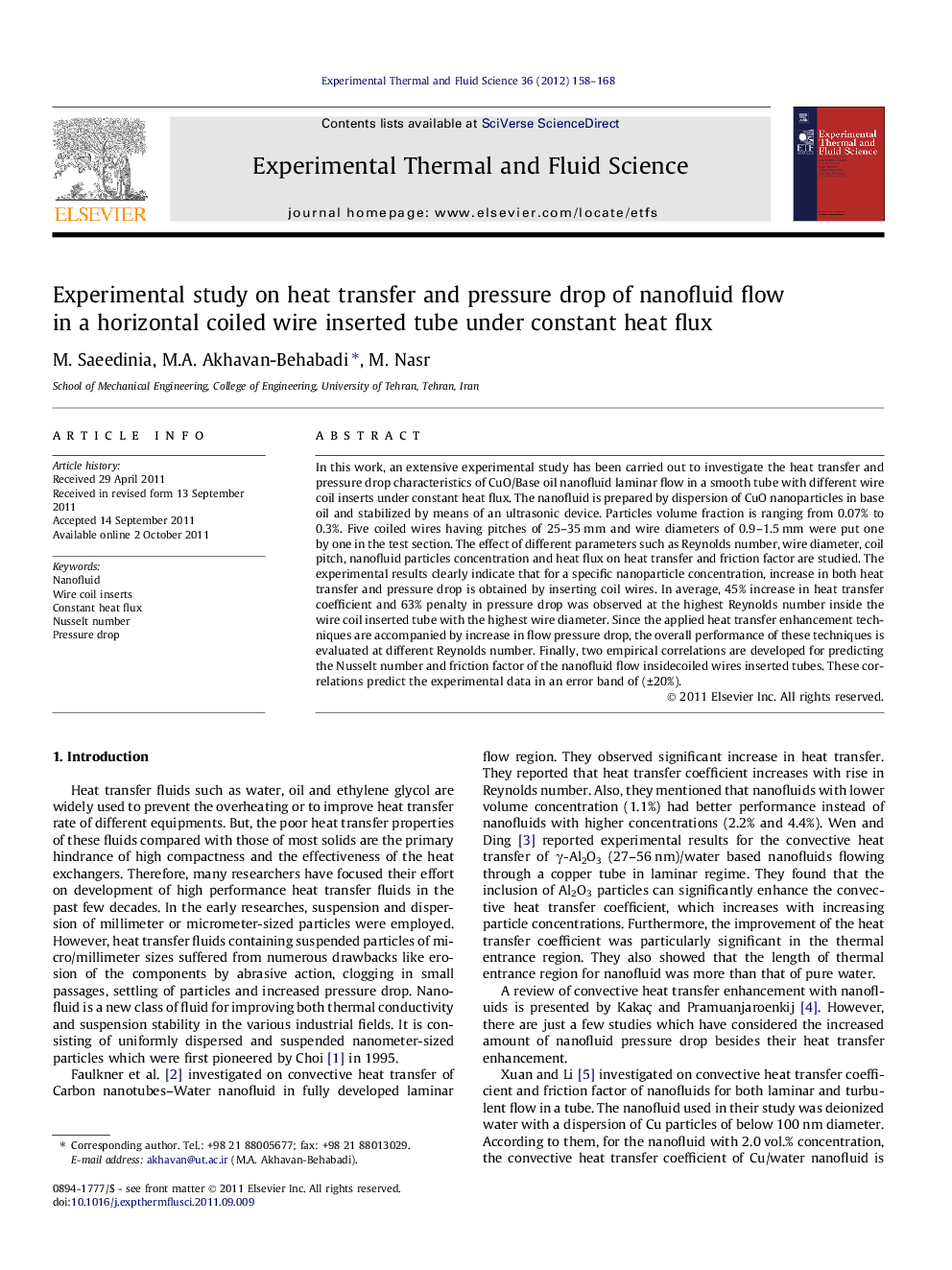| Article ID | Journal | Published Year | Pages | File Type |
|---|---|---|---|---|
| 651839 | Experimental Thermal and Fluid Science | 2012 | 11 Pages |
In this work, an extensive experimental study has been carried out to investigate the heat transfer and pressure drop characteristics of CuO/Base oil nanofluid laminar flow in a smooth tube with different wire coil inserts under constant heat flux. The nanofluid is prepared by dispersion of CuO nanoparticles in base oil and stabilized by means of an ultrasonic device. Particles volume fraction is ranging from 0.07% to 0.3%. Five coiled wires having pitches of 25–35 mm and wire diameters of 0.9–1.5 mm were put one by one in the test section. The effect of different parameters such as Reynolds number, wire diameter, coil pitch, nanofluid particles concentration and heat flux on heat transfer and friction factor are studied. The experimental results clearly indicate that for a specific nanoparticle concentration, increase in both heat transfer and pressure drop is obtained by inserting coil wires. In average, 45% increase in heat transfer coefficient and 63% penalty in pressure drop was observed at the highest Reynolds number inside the wire coil inserted tube with the highest wire diameter. Since the applied heat transfer enhancement techniques are accompanied by increase in flow pressure drop, the overall performance of these techniques is evaluated at different Reynolds number. Finally, two empirical correlations are developed for predicting the Nusselt number and friction factor of the nanofluid flow insidecoiled wires inserted tubes. These correlations predict the experimental data in an error band of (±20%).
► Heat transfer and pressure drop characteristics of nanofluid laminar flow are studied experimentally. ► CuO/Base oil nanofluid flows inside wire coil inserted tubes under constant heat flux conditions. ► Increasing nanofluid concentration enhances the heat transfer and pressure drop rates. ► Also, wire coil inserts increase the heat transfer and pressure drop of nanofluid flow. ► Two empirical correlations are developed to predict Nusselt number and friction factor.
